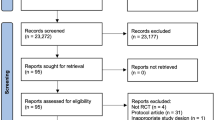Summary
We conducted a three-week randomized trial comparing the improvement of functional capacity by exercise training in chronic heart failure by the steady-state (EF 27.3%, n=20) and the interval modus (EF 29.3%, n=20) with a control group (EF=26.6%, n=10). Minimal EF was 10%, the lowest maximal oxygen consumption was 9.3ml/kg/min and the lowest cardiac output was 1.9l/min; 9 patients had been evaluated for HTX. VO2 at the anaerobic threshold and at maximal exercise increased in the continuous exercise group by 1.4 or 1.6ml/kg/min, respectively, corresponding to an increase of 13.7% (p<0.05) and 9.3% (p<0.05). In the interval training group the increase was 1.3 and 1.5ml/kg/min corresponding to 14% (p<0.05) and 8.1% (p<0.05). Continous short-term exercise had no impact to central hemodynamics as pulmonary artery pressure (PA), capillary wedge pressure (pc), cardiac index (CI) or stroke volume index (SVI), whereas after interval training a significant increase at maximal exercise could be seen in CI (p<0.05) and SVI (p<0.01) with a concomitant drop in systemic peripheral resistance (p<0.05) compared to the steady-state modus. Interval training was further characterized by a higher short-term but lower mean work load with a significantly smaller increase in lactate. Quality of life was improved according to the SF-36 questionnaire in both training groups but the psychologic sum factor was three times as high, increasing to 24.2% in the steady-state exercise group. It can be concluded that clinically stable patients with heart failure and even those already having been evaluated for cardiac transplantation profit from short-term physical training. Both training modalities seem equally suited to improve functional capacity. However interval training leads to more pronounced improvement in hemodynamics compared to the steady-state exercise, whereas the later had a greater impact on psychological well-being and quality of life. Patients with heart failure and severe peripheral deconditioning tolerate higher workloads with more peripheral stress by an interval training modus. Long-term training modalities need to be established to further improve and stabilize functional status.
Zusammenfassung
In einer 3-wöchigen randomisierten und kontrollierten Studie bei chronischer, stabiler Herzinsuffizienz wurde die Verbesserung der funktionellen Leistungskapazität durch körperliches Training in einer kontinuierlichen Trainingsgruppe (EF 27,3% n=20), einer Intervalltrainings- (EF 29,3% n=20) und einer Kontrollgruppe (EF 26,6% n=10) untersucht. Die minimale EF lag bei 10%, die kleinste maximale Sauerstoffaufnahme bei 9,3ml/kg/min und der geringste CI bei 1,9l/m2/min. In der Dauertrainingsgruppe verbesserte sich die Sauerstoffaufnahme an der anaeroben Schwelle (VO2AT) und bei peak Ausbelastung (VO2 peak) um 1,4 bzw. 1,6 ml/kg/min – entsprechend 13,7% (p<0,05) und 9,3% (p<0,05). Bei der Intervalltrainingsgruppe wurde eine signifikante Steigerung gegenüber der Kontrollgruppe an der anaeroben Schwelle um 1,3 und bei peak Ausbelastung um 1,5 ml/kg/min – entsprechend 14,0% (p<0,05) und 8,1% (p<0,05) – erzielt. Insgesamt 9 Patienten aus beiden Trainingsgruppen waren für eine Herztransplantation evaluiert worden. Kontinuierliches Dauertraining über drei Wochen hatte keinen Einfluss auf den pulmonalarteriellen Druck (PA), pulmonalkapillären Verschlussdruck (PC), Cardiac Index (CI) und systemischen Widerstand (Rs). Das Intervall-training verbesserte, gegenüber dem Dauertraining, signifikant den CI um 0,44l/min/m2 (p<0,05) und Stroke Volume Index (SVI) um 4,2 ml/m2 (p<0,01) unter Belastung bei gleichzeitigem Abfall des systemischen Widerstandes um 62,1dyn×sec×cm–5 (p<0,05). Intervalltraining zeichnete sich durch eine höhere Maximalbelastung bei geringerer durchschnittlicher Trainingswattzahl und signifikant niedrigerem Laktatanstieg aus. Die Lebensqualität gemäß Fragebogen SF-36 verbesserte sich in beiden Gruppen, wobei in der Dauertrainingsgruppe der psychische Summenfaktor mit 24,2% um das Dreifache anstieg. Demzufolge profitieren klinisch stabile Patienten mit Herzinsuffizienz und Patienten auf der Warteliste für eine Herztransplantation von einem Kurzzeittrainingsprogramm. Sowohl Intervalltraining als auch kontinuierliches Dauertraining scheinen gleichermaßen geeignet, die funktionelle Leistungskapazität und Lebensqualität zu verbessern; nur das Intervalltraining führte jedoch zu einer Verbesserung hämodynamischer Parameter unter Belastung.
Similar content being viewed by others
Author information
Authors and Affiliations
Additional information
Eingegangen: 6. Juli 2001 Akzeptiert: 26. November 2001
Rights and permissions
About this article
Cite this article
Nechwatal, R., Duck, C. & Gruber, G. Körperliches Training als Intervall- oder kontinuierliches Training bei chronischer Herzinsuffizienz zur Verbesserung der funktionellen Leistungskapazität, Hämodynamik und Lebensqualität – eine kontrollierte Studie. Z Kardiol 91, 328–337 (2002). https://doi.org/10.1007/s003920200034
Published:
Issue Date:
DOI: https://doi.org/10.1007/s003920200034




